Meet cheetah cub born against the odds at Taronga Western Plains
This tiny cheetah cub survived a traumatic premature birth thanks to an emergency caesarean section. Watch the adorable video of her drinking from a bottle at just two weeks of age
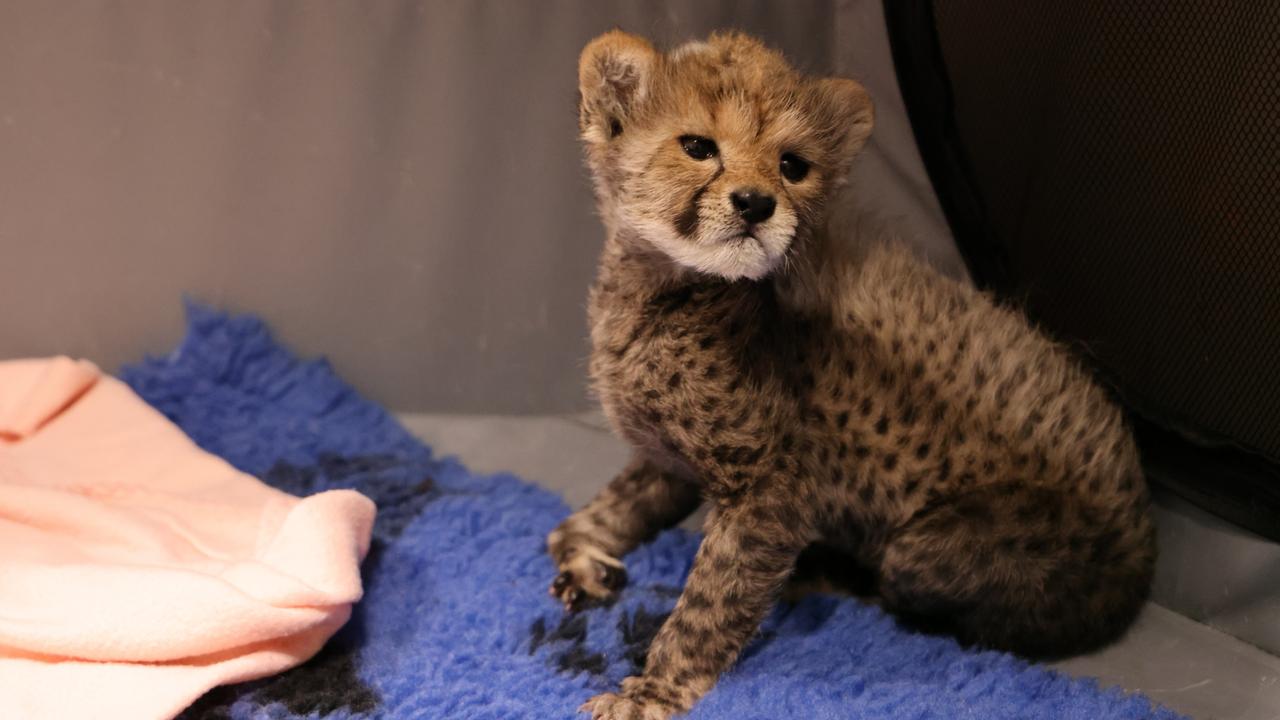
READING LEVEL: GREEN
A cheetah cub is being hand-reared by zookeepers at Taronga Western Plains Zoo after it was delivered early via emergency caesarean section*.
In the early hours of February 22, zookeepers watched anxiously as cheetah mum-to-be Siri went into early labour.
The pregnant cheetah, who had challenges conceiving* and miscarried* a litter in 2024, was still five days from her earliest due date.
“Though five days doesn’t sound like a lot, a cheetah’s pregnancy is about 93 days and so those final five days are critical,” said senior veterinarian Dr Alisa Wallace, who leads the Wildlife Hospital team at the Dubbo zoo.

With cameras in Siri’s den box, keepers noticed that something wasn’t right and made the decision to perform an emergency C-section* to give the premature cubs the best chance at surviving.
The procedure took place at the Wildlife Hospital in full view of guests who were at Western Plains Zoo that Saturday afternoon.
“Our visitors were actually able to witness the delivery of these cubs and see all of the care that goes into that procedure,” Dr Wallace said. “I know there were a lot of people very excited to see the cubs take their first breath.”
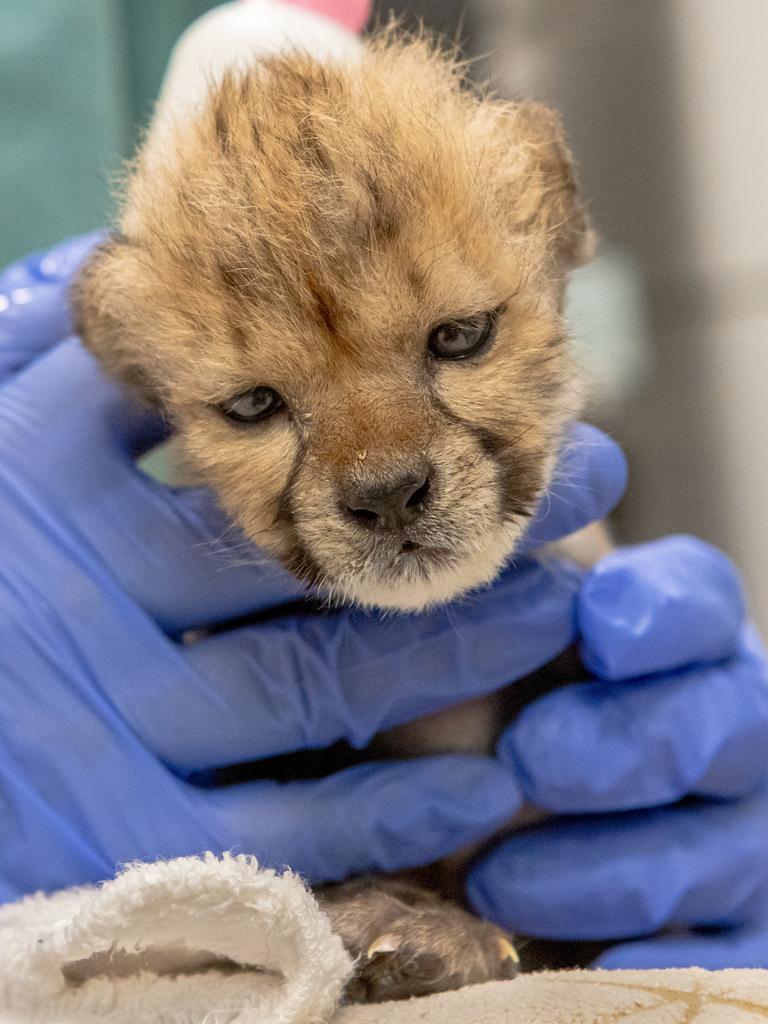
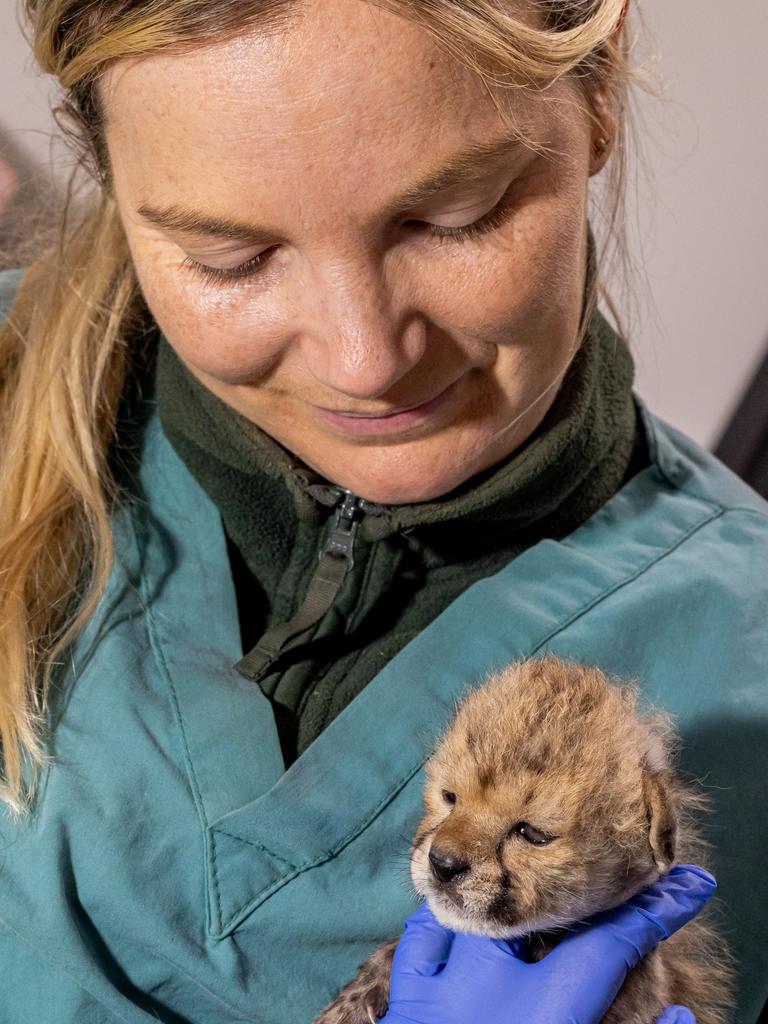
It was “all hands on deck” with keepers, vets and vet nurses working throughout the afternoon to deliver four cubs and keep Siri stable. Unfortunately, two of the cubs were stillborn*, with a third lost to pneumonia* – a common complication in premature* babies – six days after it was born.
The fourth and final cub had to be given oxygen, IV fluids*, handfeeding and constant monitoring in an incubator* in the hospital’s “Cheetah NICU*”. She has since moved out of intensive care* but will remain at the Wildlife Hospital for the foreseeable future, where the veterinary team can continue to monitor her kidney function, vision and the development of her motor skills*.
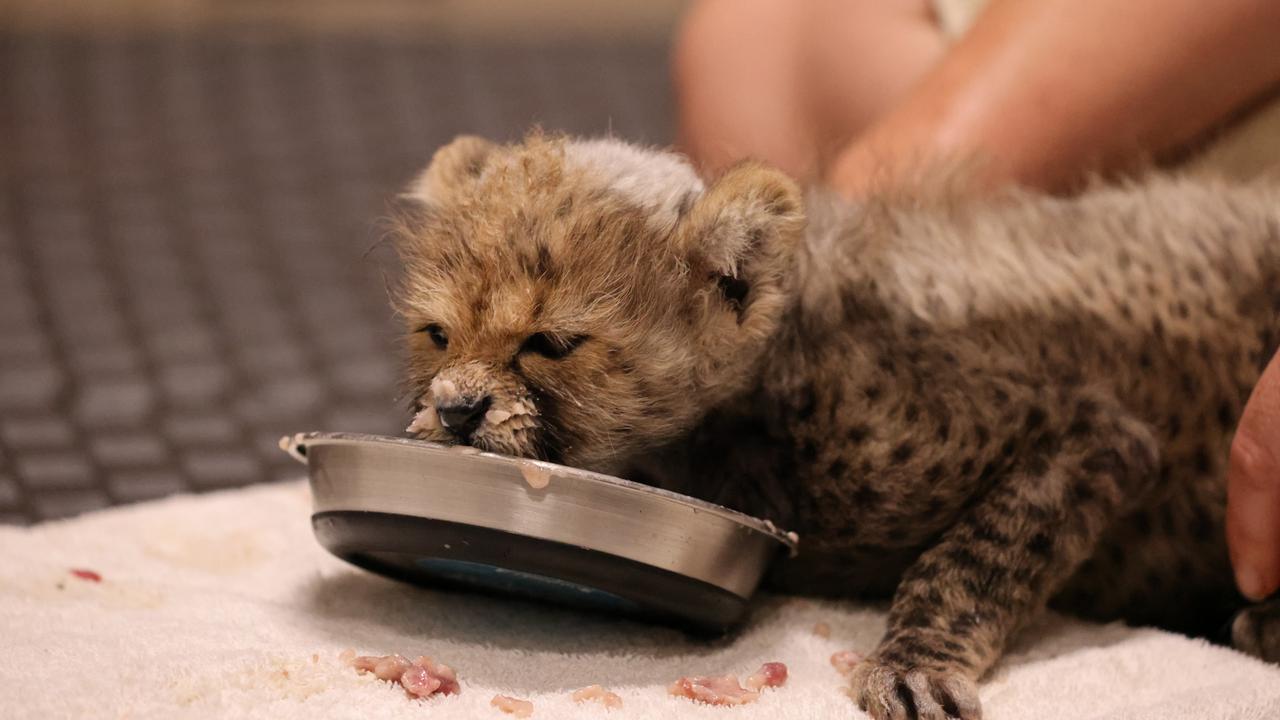
Mum Siri has made a complete recovery, but due to the cub’s complex health needs it has not been possible to reunite the mother and daughter.
This was not the first time the vet team and keepers at Taronga Western Plains Zoo have hand-raised a cheetah cub. Siri herself was hand-raised in 2015 following rejection by her mum, something that commonly happens with cheetahs if they have a single cub.
“Some of the members of the team that looked after Siri are now looking after her daughter almost 10 years later, which is pretty special,” said cheetah keeper Jordan Michelmore.
Cheetahs are classified as vulnerable in the wild with fewer than 7,000 mature individuals now left.
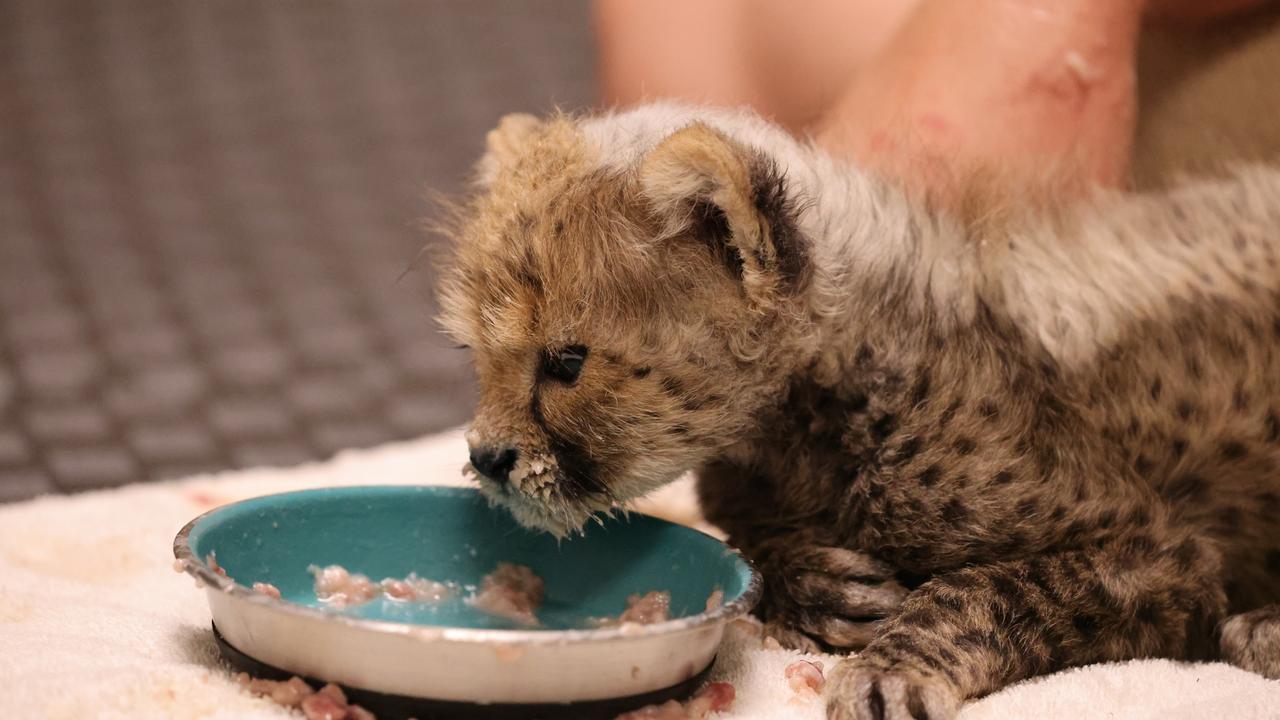
Poaching, illegal wildlife trafficking* and habitat destruction have led to a decline in wild populations. Cheetahs are also very difficult to breed, so every birth is extremely valuable to the global population.
Taronga Western Plains Zoo is part of the international cheetah breeding program, and the first Australasian* zoo to breed the species.
“This little cub is really important,” Dr Wallace said. “Siri is quite genetically valuable*, and having her offspring born and be able to grow up and reproduce is really important for the survival of the population.”
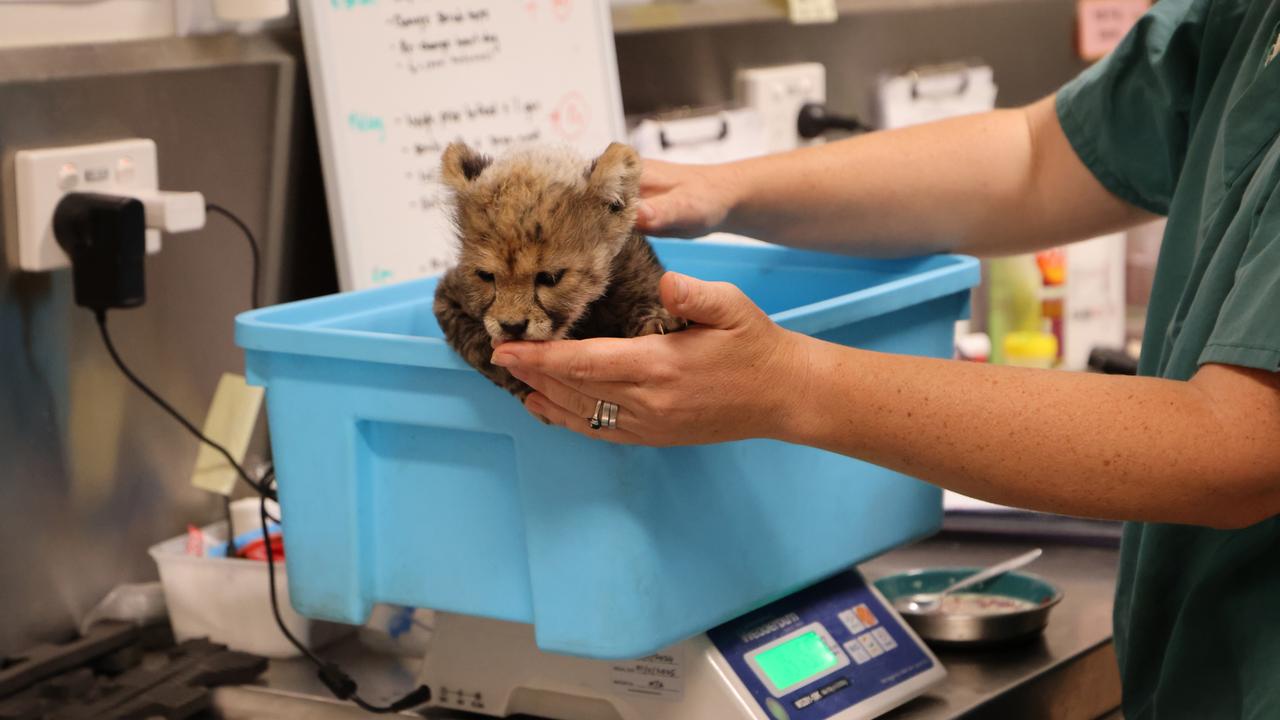
The cub will remain behind the scenes until she is strong enough to make her first public appearance.
Guests can learn more about Taronga’s breeding program at the free cheetah keeper talk. They can also check out the Wildlife Hospital area at the not-for-profit zoo, where money spent goes towards the zoo’s conservation efforts.
WATCH THE VIDEO
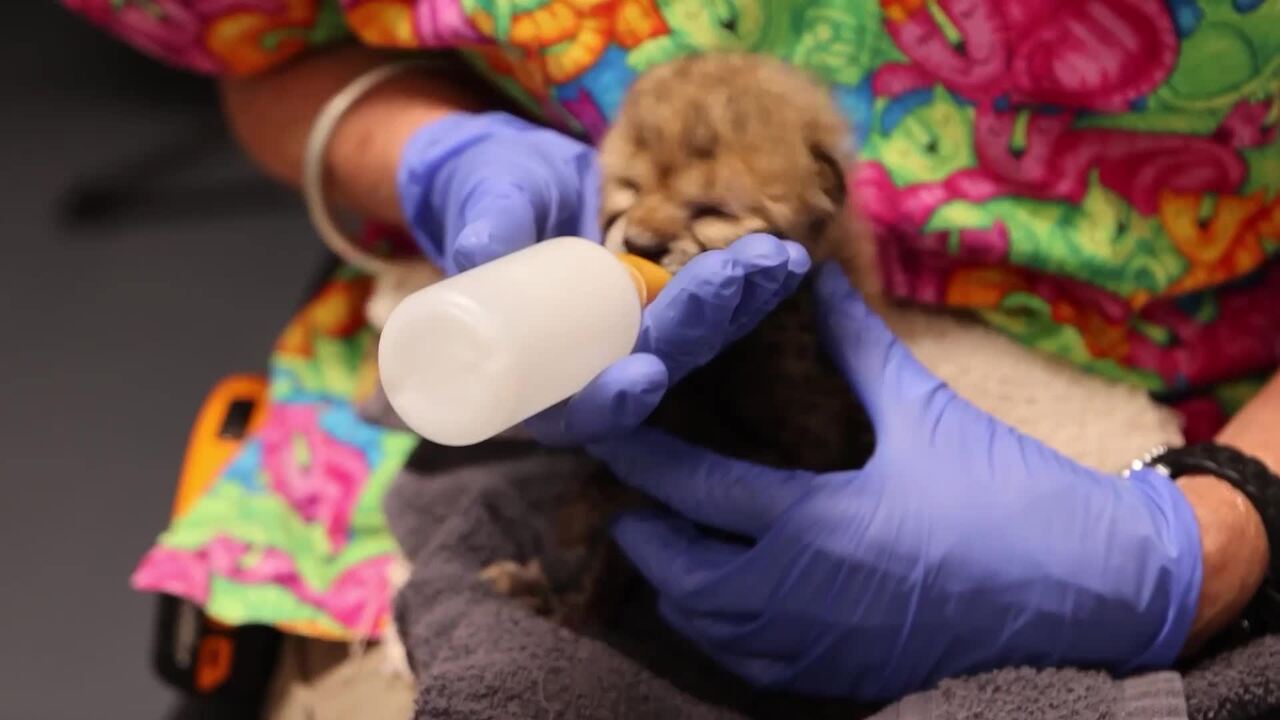
Zookeepers at Taronga Western Plains Zoo Dubbo feed Siri’s surviving female cub with a bottle at two weeks of age.
POLL
GLOSSARY
- caesarean section: a procedure where a baby is born through a surgical cut made through the abdominal wall and uterus
- conceiving: the process of making babies, reproducing
- miscarried: when the babies die inside their mother’s tummy while developing
- C-section: a shortened way of saying caesarean section
- stillborn: a baby that is born dead
- pneumonia: a serious lung infection
- premature: born early
- IV fluids: intravenous fluids, fluids given directly into the veins using a drip
- incubator: a special heated enclosure
- NICU: neonatal intensive care unit or newborn intensive care, where newborn babies with life-threatening or special needs are cared for around the clock
- intensive care: a ward where patients suffering from life-threatening emergencies are cared for
- motor skills: the ability to move the body
- wildlife trafficking: the illegal capturing and trade of wild animals
- Australasian: a subregion of Oceania, including Australia, New Zealand and sometimes New Guinea and its surrounding islands
- genetically valuable: valuable from a reproductive sense for the survival of the species
EXTRA READING
Crocs in swimming pool surprise
Cat carried inside cup in Vietnam
The purr-fect pawsome foursome
QUICK QUIZ
1. Why did zookeepers decide to perform a C-section on Siri?
2. How many days premature was the cub born?
3. Why have the cub and mum been kept separated?
4. What is one thing the mum and cub have in common?
5. How many cheetahs are thought to be left in the wild?
LISTEN TO THIS STORY
CLASSROOM ACTIVITIES
1. Help them bond
How do you think the zoo keepers will help Siri to bond with her new baby cub when they can be reunited? Write a list of important steps that they will need to take to help both mother and cub. Next to each step write an explanation of how this will help them to bond.
Time: allow at least 25 minutes to complete this activity
Curriculum Links: English, Science
2. Extension
Imagine that you have been asked to give the next Cheetah Keepers Talk. Your purpose is to explain why the work of breeding programs like Taronga’s Cheetah breeding program are so important. Use information in the story and your research skills to help make your talk persuasive and interesting.
Time: allow at least 45 minutes to complete this activity
Curriculum Links: English, Science
VCOP ACTIVITY
Wow word recycle
There are plenty of wow words (ambitious pieces of vocabulary) being used in the article. Some are in the glossary, but there might be extra ones from the article that you think are exceptional as well.
Identify all the words in the article that you think are not common words, and particularly good choices for the writer to have chosen.
Select three words you have highlighted to recycle into your own sentences.
If any of the words you identified are not in the glossary, write up your own glossary for them.
Extension
Find a bland sentence from the article to up-level. Can you add more detail and description? Can you replace any base words with more specific synonyms?
Down-level for a younger audience. Find a sentence in the article that is high level. Now rewrite it for a younger audience so they can understand the words without using the glossary.

